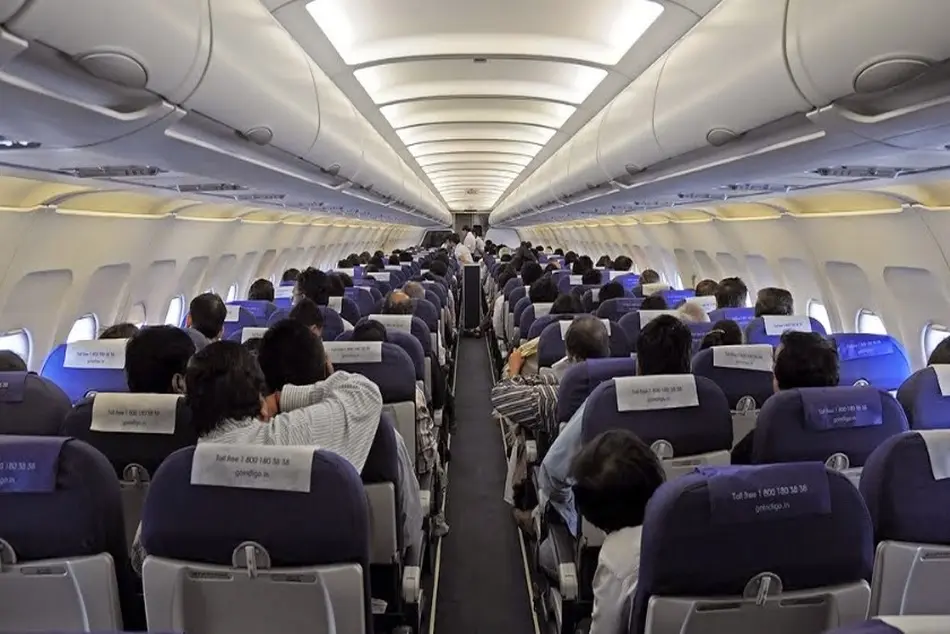October Passenger Demand Rebounds from Weather-Impacted September

The International Air Transport Association (IATA) announced global passenger traffic results for October showing that demand (measured in revenue passenger kilometers, or RPKs) rose 7.2% compared to the same month last year. Capacity grew 6.2% and load factor climbed 0.8 percentage points to 80.8%, which was a record for the month.
October's performance was a strong bounce-back after the hurricane-related disruptions in September. Domestic and international travel growth largely was in balance.
"As expected, the recent severe weather in the Americas region had only a temporary impact on the healthy travel demand we have seen this year, and we remain on course for another year of above-trend growth," said Alexandre de Juniac, IATA's Director General and CEO.
| October 2017 (% YEAR-ON-YEAR)
|
WORLD SHARE (1) | RPK | ASK | PLF- %-PT (2) | PLF- LEVEL(3) |
|---|---|---|---|---|---|
| Total Market | 100.0% | 7.2% | 6.2% | 0.8% | 80.8% |
| Africa | 2.2%
|
5.7% | 2.2% | 2.4%
|
71.9% |
| Asia Pacific | 32.9%
|
10.1% | 8.9% | 0.8% | 80.2% |
| Europe | 26.4%
|
6.3% | 4.5% | 1.4% | 84.3% |
| Latin America | 5.2% | 6.7% | 4.9% | 1.4% | 82.5% |
| Middle East | 9.6% | 6.8% | 5.4% | 0.9% | 69.4%
|
| North America | 23.8%
|
4.8%
|
5.3%
|
-0.4% | 83.3% |
(1) % of industry RPKs in 2016 (2) Year-on-year change in load factor (3) Load factor level
International Passenger Markets
October international passenger demand rose 7.3% compared to October 2016, which was an improvement compared to the 6.6% demand increase for September. Airlines in all regions recorded growth. Total capacity climbed 6.0%, and load factor increased 1.0 percentage point to 79.4%.
- Asia-Pacific airlines led all regions with traffic growth of 10.3% compared to the year-ago period, which was up from an 8.7% rise in September. Capacity climbed 8.4% and load factor rose 1.3 percentage points to 78.0%. Seasonally-adjusted passenger volumes are rising at an annualized rate of 8-9%, supported by the solid regional economic backdrop and strong growth in the number of connections.
- European carriers' October demand climbed 6.2% over October 2016, which was a slowdown compared to the 7.2% year-over-year growth recorded for September. Capacity increased 4.5% and load factor rose 1.3 percentage points to 84.9%, highest among regions. While economic conditions have shown strong improvement over the past year or so, the upward trend in seasonally-adjusted traffic has slowed considerably since May. This reflects the nature of international travel in the region, which is predominantly short-haul and hence, highly-price sensitive.
- Middle East carriers experienced a 6.9% rise in demand in October, improved from 3.9% in September. Capacity increased 5.3%, and load factor climbed 1.0 percentage point to 69.6%. As in Europe, the upward trend in RPKs has slowed. Demand to and from North America fell in year-on-year terms for the seventh consecutive month in September (the most recent month for which route-specific figures are available) and it remains the only international market not to have grown in annual terms this year. Traffic has been heavily affected by the now-lifted ban on portable electronic devices, as well as from the proposed travel bans to the US.
- North American airlines' traffic climbed 3.7% in October compared to the year-ago period, lowest among the regions but an improvement compared to the hurricane-impacted 3% growth in September. Capacity rose 5.2% and load factor dropped 1.1 percentage points to 79.2%. North America was one of just two regions to post a load factor decline. There continue to be indications that inbound travel to the US is being deterred by the additional security measures now involved with travelling to that country.
- Latin American airlines had an 8.7% increase in traffic in October, which was a slowdown from September growth of 10.7%, but still the second strongest percentage growth among regions. On a seasonally-adjusted basis, however, volumes are slightly below where they were three months ago. This may indicate spillover from the impact of Hurricanes Irma and Maria. Capacity climbed 9.1%, and load factor slipped 0.3 percentage points to 82.6%.
- African airlines' traffic grew 7.5% year-on-year in October, up from 3.6% in September. Conditions in the region's two largest economies—Nigeria and South Africa, still are diverging, with business confidence levels in Nigeria near a three-year high, while confidence levels in South Africa are consistent with falling economic activity. Capacity rose 3.4%, and load factor jumped 2.7 percentage points to 70.9%.